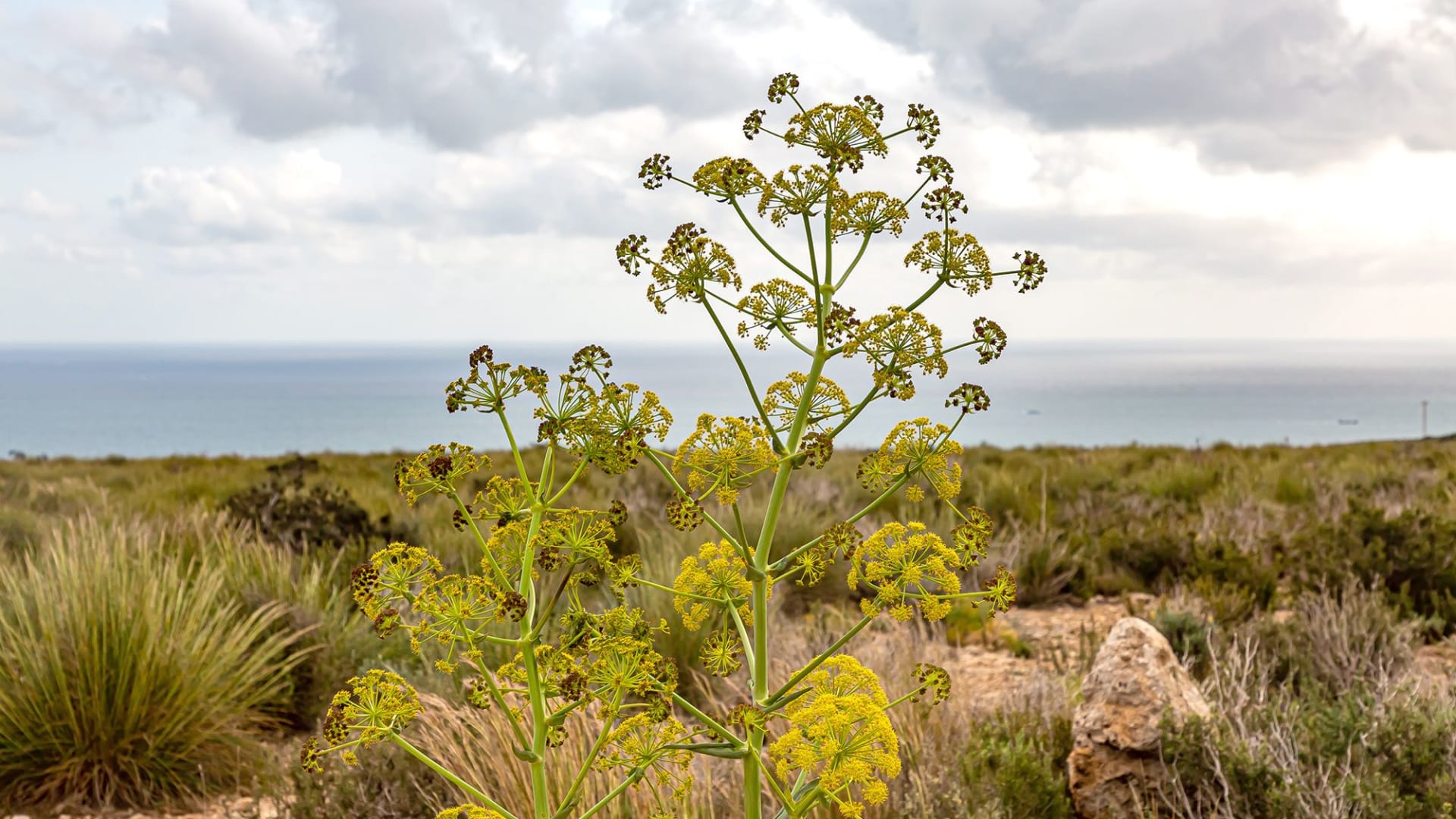دبي، الإمارات العربية المتحدة (CNN) -- أهو فاتح شهية؟ أم دواء؟ أم مبيد حشري؟ لطالما أثار "الحلتيت"، وهو نبات شمر بري موطنه الأصلي في أفغانستان، وإيران، وأوزبكستان، الحيرة.
ويُستخدم الراتنج المستخرج من جذوره في أطعمة المطبخ الهندي، عادةً بعد طحنه إلى مسحوق وخلطه مع الدقيق. ويتميز برائحته القوية والنفاذة. وفي الواقع، تُعتبر رائحته لاذعة للغاية لدرجة أنه قد يكون العنصر الأكثر إثارة للانقسام في الهند.
وإذا علّق بيديك عن طريق الخطأ، فإنه من الصعب إزالته، بصرف النظر عن عدد المرات التي تغسل فيها يديك.
وفي سوق "خاري باولي" في دلهي القديمة، على سبيل المثال، تمكن "الحلتيت" من "التفوق على رائحة" جميع التوابل الأخرى.
ويشرح سيدارت تالوار وريا روزاليند رامجي، المؤسسان المشاركان في مدرسة شوبيز للطهاة، أن "الحلتيت يُعد أساسيًا لجميع مكونات الطهي الهندي".
وأضافا أن "الحلتيت يسد الفجوة بين نكهتي البصل والثوم، اللتين كانتا محظورتين بسبب المعتقدات الدينية في المجتمعات الهندية النباتية إلى حد كبير. ورغم تنوع الطهي في الهند، إلا أن الحلتيت يبقى عنصرا ثابتًا".
وعلى سبيل المثال، يتجنب أتباع الجاينية، وهي ديانة هندية قديمة، البصل، والثوم، والزنجبيل بالإضافة إلى عدم تناول اللحوم.
ويعترف رامجي أن رائحة "الحلتيت" يمكن أن تشكل تحديًا، إذ تمت مقارنة "الحلتيت" الخام برائحة الملفوف الفاسد، حتى أنه لُقّب بـ"روث الشيطان".
وتصنع كمية صغيرة فارقا كبيرا، إذ ينصح تالوار بوضع كمية صغيرة من "الحلتيت" في الزيت الساخن.
ويقوم غالبية الأشخاص بشراء نسخة مسحوقة من الحلتيت ممزوجة بالأرز أو دقيق القمح. ومع ذلك، فإن الطهاة الأكثر ميلاً إلى المغامرة سيلجأون إلى الشكل البلوري الصلب، الأشبه بالملح الصخري.
تاريخ "الحلتيت"
وينسب بعض العلماء الفضل إلى الإسكندر الأكبر، بجلب "الحلتيت" إلى الهند لأول مرة.
وأوضح مؤرخ الطهي الدكتور أشيش شوبرا أن "النظرية الشائعة تتمثل بأن جيش الإسكندر صادف نبات الحلتيت في جبال هندو كوش، واعتقدوا خطأً أنه نبات السيلفيوم النادر، الذي يتمتع بخصائص مشابهة للحلتيت".
وأشار شوبرا إلى أن الجنود حملوا معهم النبات إلى الهند بصعوبة، ليكتشفوا لاحقًا أن الأمر لم يكن كما اعتقدوا. ومع ذلك، كان للهنود رأي آخر على ما يبدو، موضحًا أن "الحلتيت" كان يُستخدم في بعض أطعمة المطبخ اليوناني الروماني، لكنه لم يدم طويلا.
ولكن مع تغير أنماط الغذاء والشهية العالمية، يحاول بعض الطهاة إعادة صياغة وصفاتهم من خلال تخطي البصل والثوم لصالح "الحلتيت".
وفقًا لما ذكره تالوار، "يمكن أن يعزز الحلتيت الإحساس بمذاق أومامي الضروري لليخنة والمرق".
وقد جاء مفهوم "أومامي"، أي الطم اللذيذ، لأول مرة من قبل خبراء التغذية اليابانيين، ولكنه أصبح إحدى المذاقات الأساسية الخمس في فن الطهي إلى جانب الحلو، والمر، والحامض، والمالح".
ووفقًا لما أوضحته المكتبة الوطنية للطب، استُخدم الحلتيت لأغراض علاجية، كطارد للسعال، ومضاد للتشنج، ومحارب الطفيليات والديدان، كما يروج له البعض كعلاج أيورفيدي فعال لغازات المعدة.
علاوة على ذلك، لم يقم الجميع بشراء الحلتيت بغرض استهلاكه، إذ كان الأفارقة والجامايكيون يرتدون أحيانًا تمائم الحلتيت، وخاصة أنها باعتقادهم يمكن أن تطرد الشياطين.
وفي عام 1918، ارتدى بعض الناس بالولايات المتحدة، أكياسًا تحتوي على الحلتيت لدرء الإنفلونزا الإسبانية.
وفي هذه الأيام، يتم استخدام خصائصه المثيرة للاشمئزاز بشكل أفضل كمبيد للآفات في الزراعة العضوية.
ورغم أن الهند تُعد أكبر مستهلك للحلتيت في العالم، إلا أن البلاد لم تقم بزراعته حتى وقت قريب.
ومنذ حوالي ثلاث سنوات، في الجانب الصحراوي البارد بمنطقة الهيمالايا، أعلن المزارعون أنهم يحاولون زراعة نبات الحلتيت الخاص بهم.
ويمكن أن تكون عملية زراعة الحلتيت بطيئة، ولكن إذا نجحت الهند في زراعة هذا المنتج محليا، فقد يعني ذلك توفير نحو 100 مليون دولار سنويا من استيراد المنتج ذاته.
وربما الأهم من ذلك، أن الهنود قد يحظون بنكهتهم المفضلة بالكامل من الهند.





